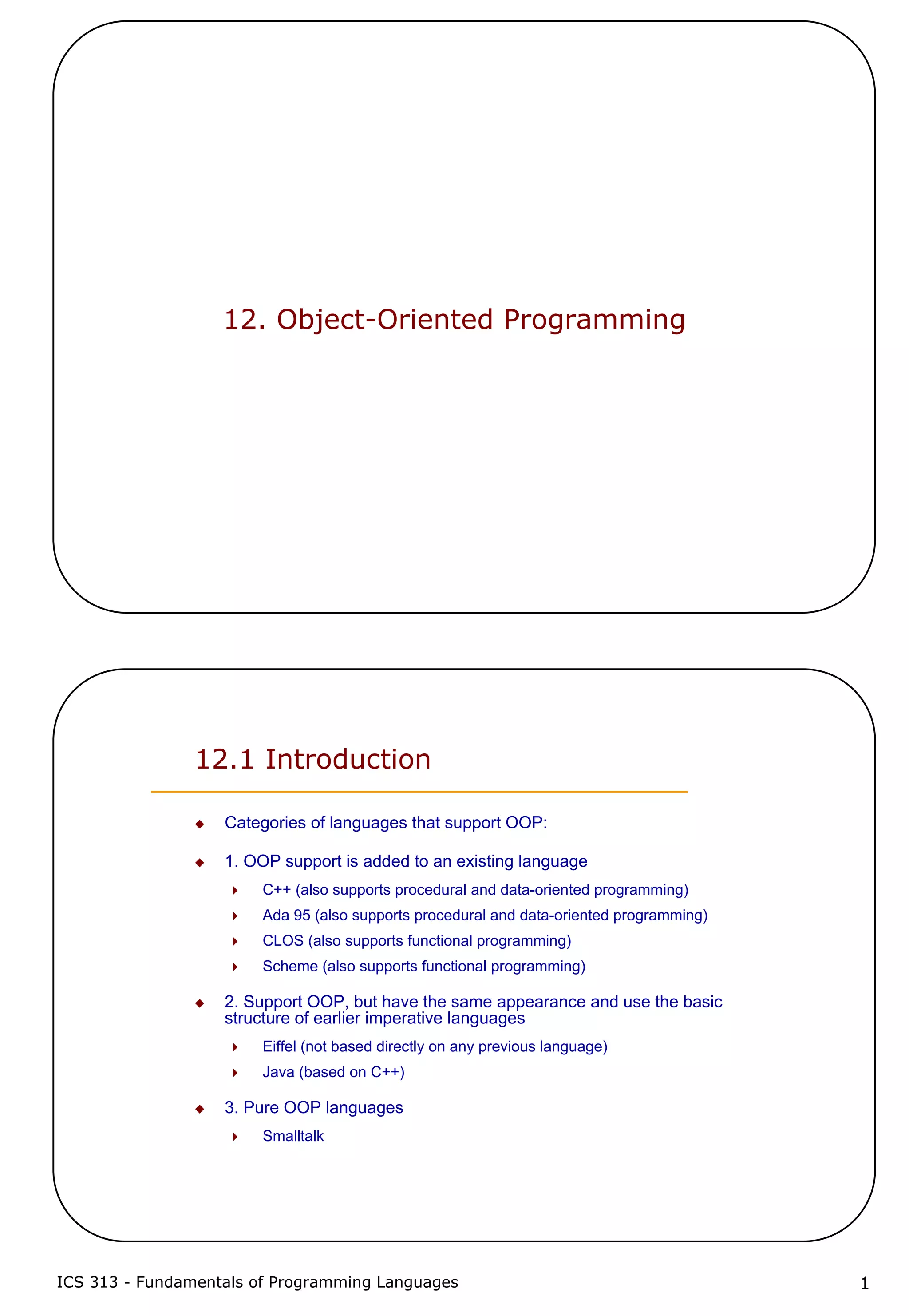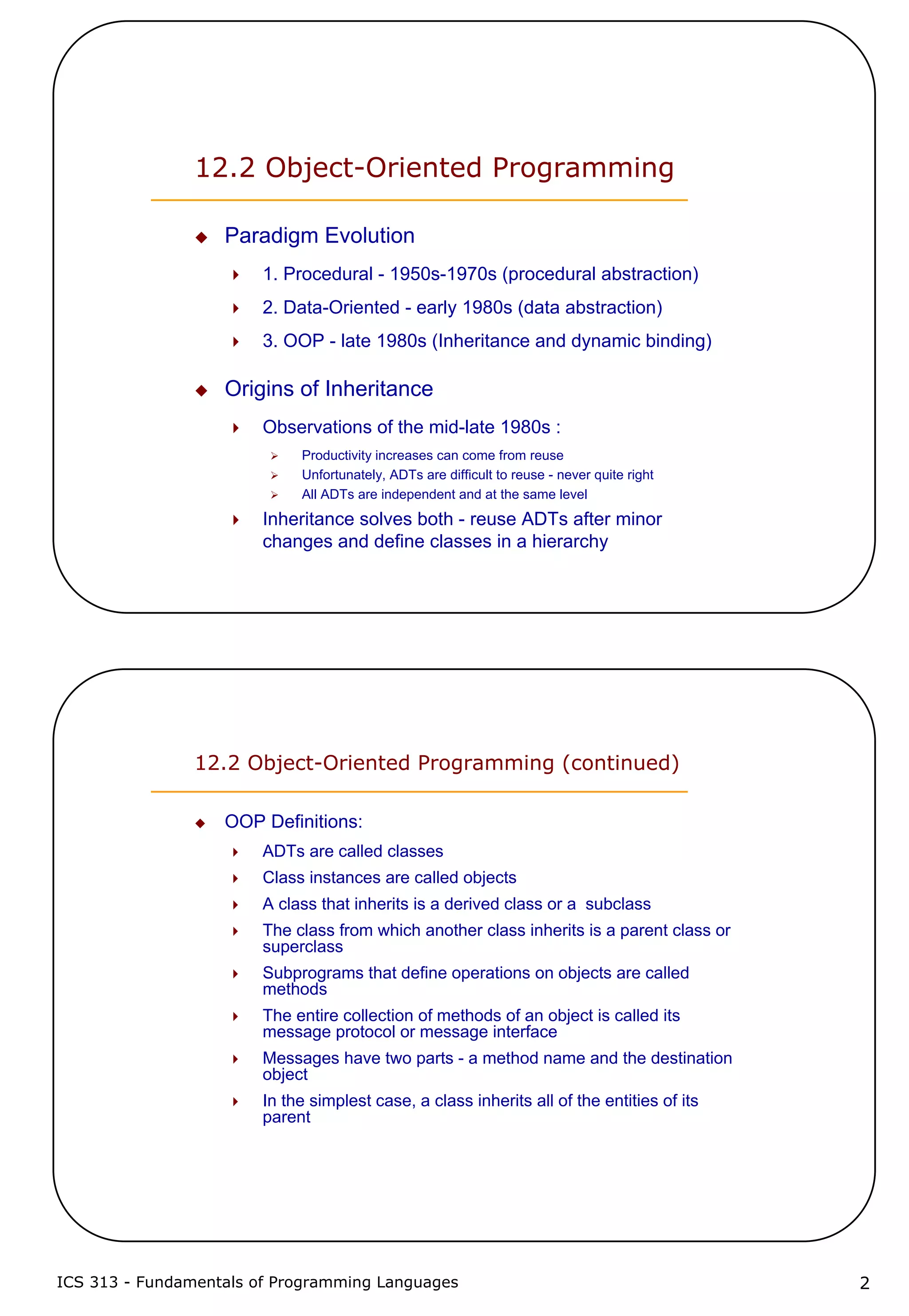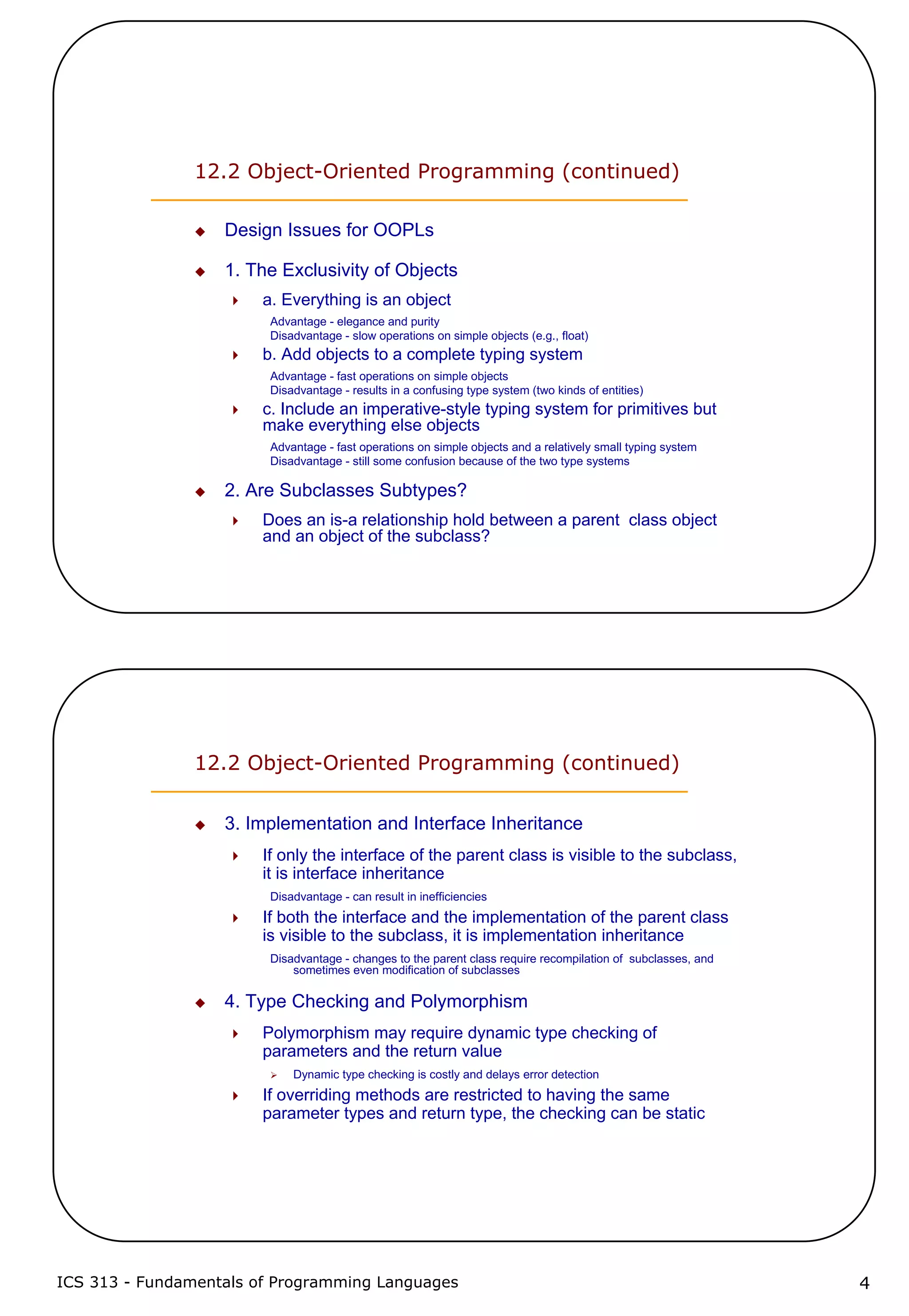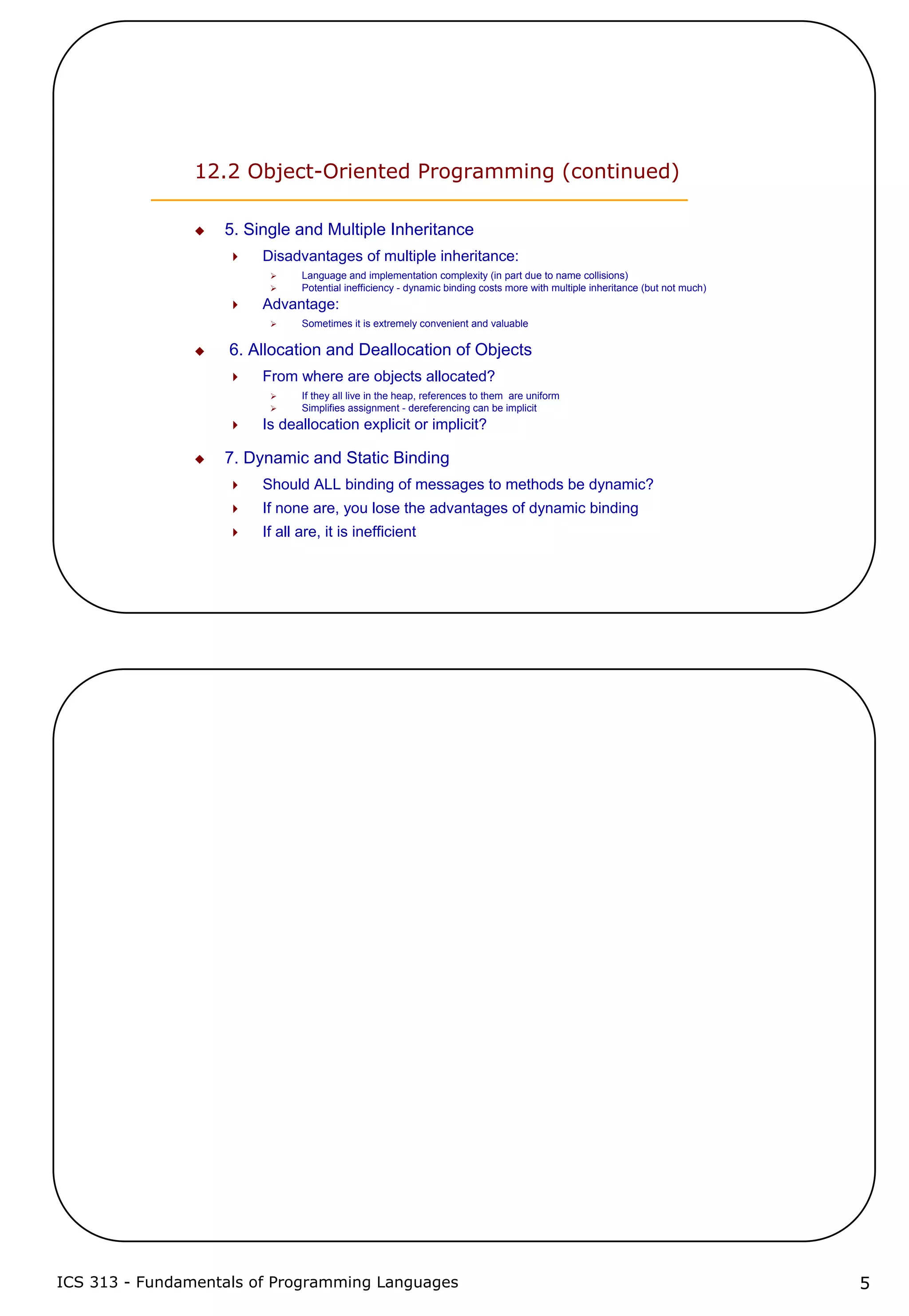This document discusses object-oriented programming and its key concepts. It covers the categories of OOP languages, the evolution of programming paradigms including procedural, data-oriented, and OOP. Key OOP concepts discussed include inheritance, polymorphism, classes, objects, and messages. Design issues for OOP languages addressed include whether everything must be an object, implementation vs interface inheritance, and single vs multiple inheritance.




